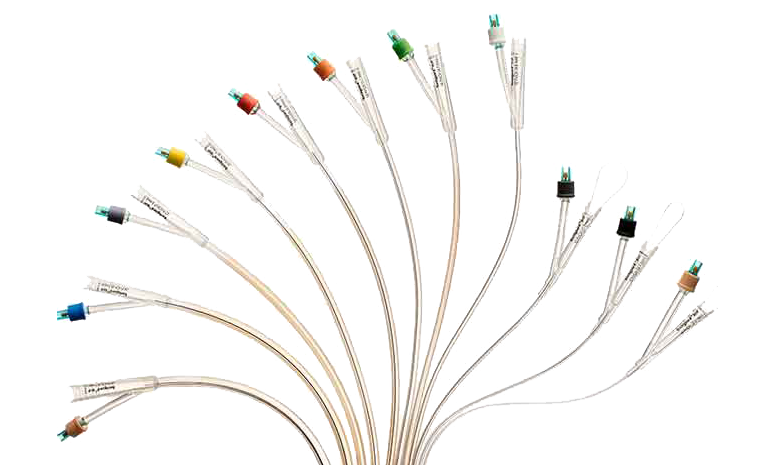Before initiating treatment with indwelling catheters, other alternatives should be considered. Always weigh the risks of the treatment against the benefits.
Indications
There are in short 4 main reasons why a patient should receive treatment with catheters:
- Difficulties emptying the bladder
- Storage of urine in the bladder needs to be avoided
- Measurement of urinary output in critically ill patients
- If catheter treatment is expected to increase the quality of life (for example during palliative care or in case of neurological bladder disorder).
Karolinska University Hospital schedule for control of the bladder with bladder scan in hospital care:
| RESIDUAL URINE* | CONTROL |
| 100-150 ml | New control in 3 hours |
| 150-300 ml | New control in 2 hours |
| 300-400 m | New control in 1 hour |
| >400 ml | Empty bladder with intermittent or indwelling catheter |
* Measure residual urine after the patient’s bladder has been emptied.
Contraindications
The main contraindication for catheterization is suspected trauma to the urethra, which is a particularly high risk for patients with pelvic trauma. Different catheters can have additional contraindications. Always read the contraindication section in the Instruction For Use supplied with the catheter.For more detailed information about indications and contraindications1, please read the EAUN Guidelines (European Association of Urology Nurses).
Quality of life
- Make sure that the patient is aware of the reason for catheter treatment and for how long it is planned to last
- Make sure the patient is aware of the procedures around catheter treatment
- Choose a catheter as comfortable as possible (see chapter 3)
- Make sure the patient is aware of common complications such as bad odour, cloudy urine, urinary tract infections and hematuria
- Inform the patient of self-care options such as enough intake of liquid, checking that the tubes are not kinked and the importance of defecation on a regular basis
- Choose an emptying manner adjusted to the patient’s way of life (catheter valve, urine bag, fixation, different options during day and night)
- Facilitate a daily life with catheter treatment adjusted to the patient
- Keep an open mind to problems that might occur in daily life, for example about sexuality
Reference:
1. http://nurses.uroweb.org/guideline/catheterisation-indwelling-catheters-in-adults-urethral-and-suprapubic
Source: All material has been written and reviewed by Märta Lauritzen, registered nurse and urotherapist and Helena Thulin, registered nurse and PhD, Karolinska University Hospital, Stockholm.





